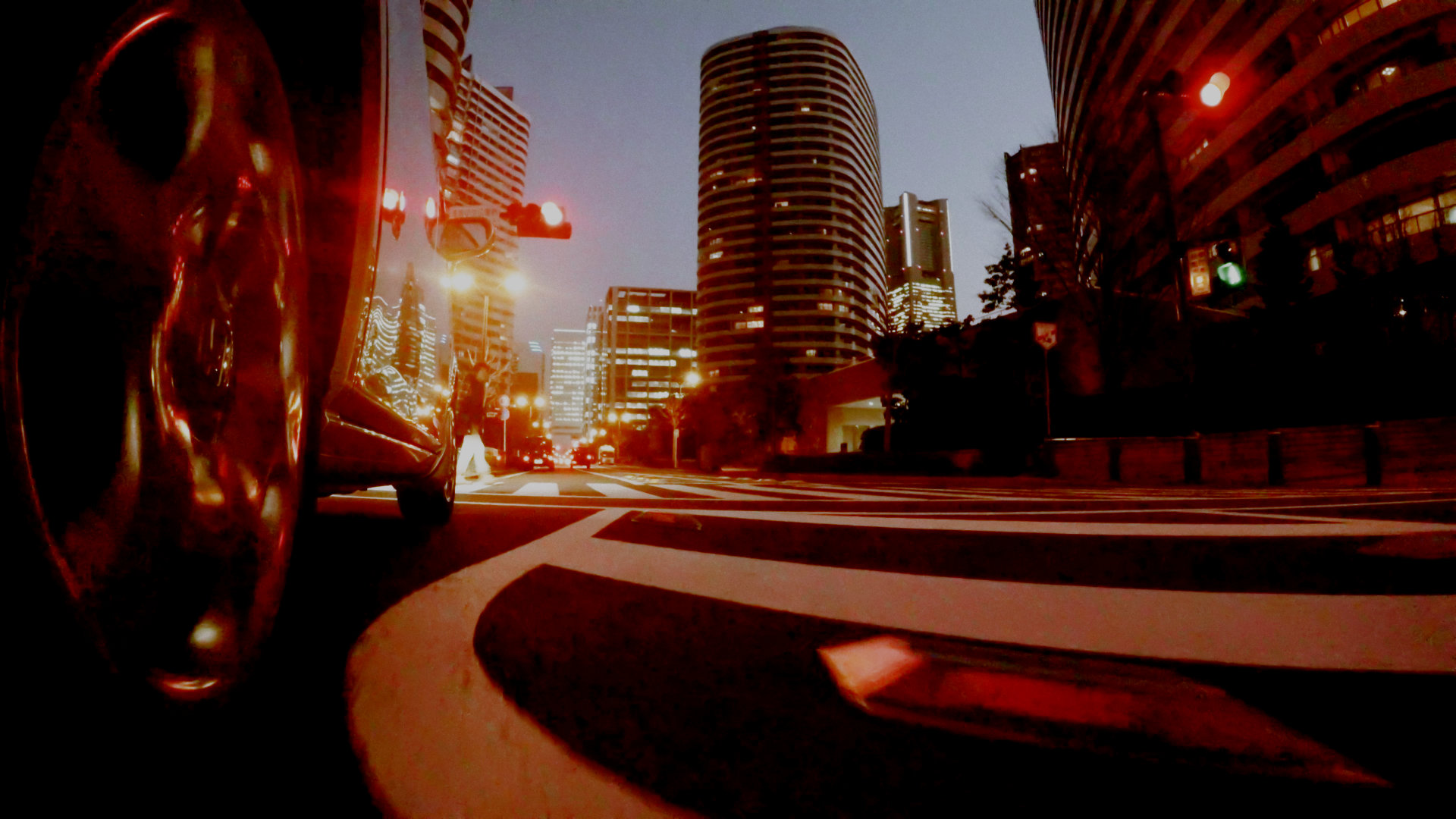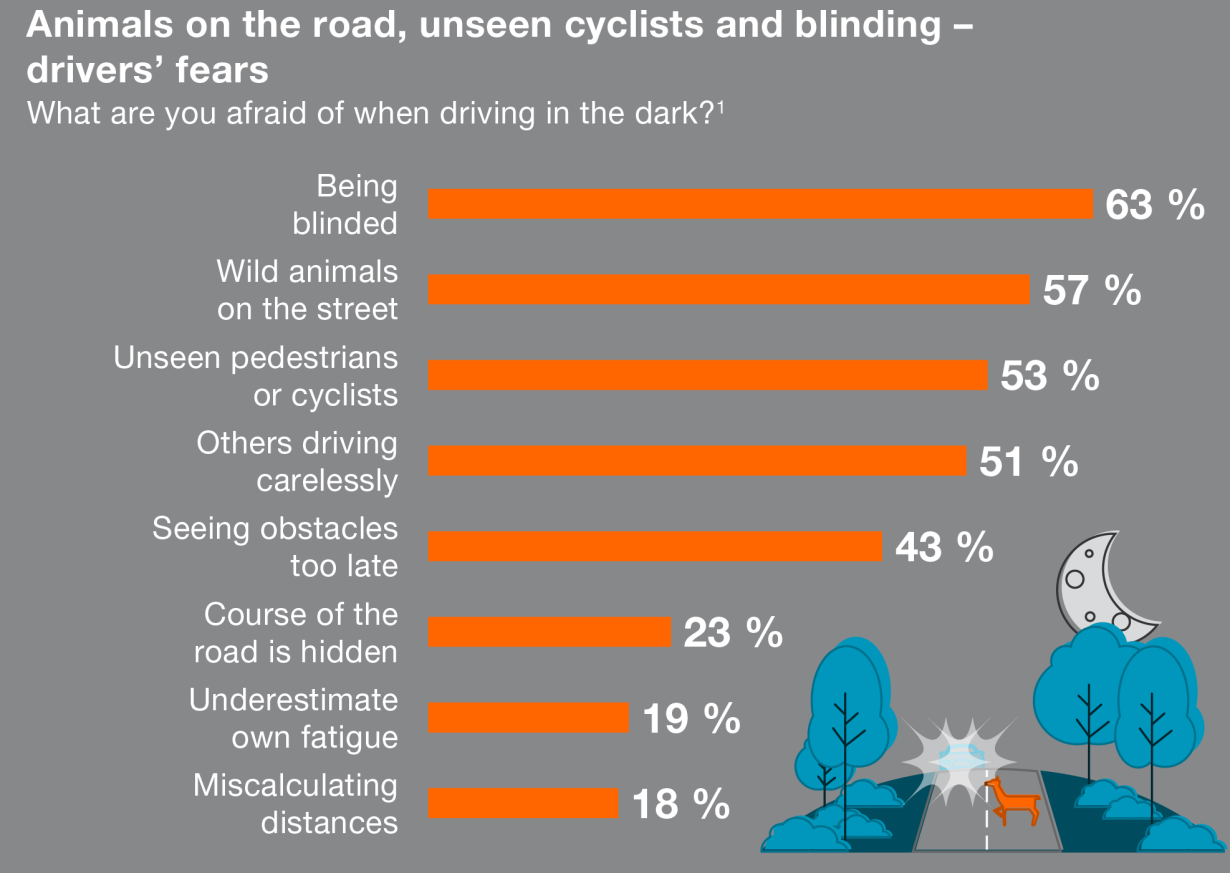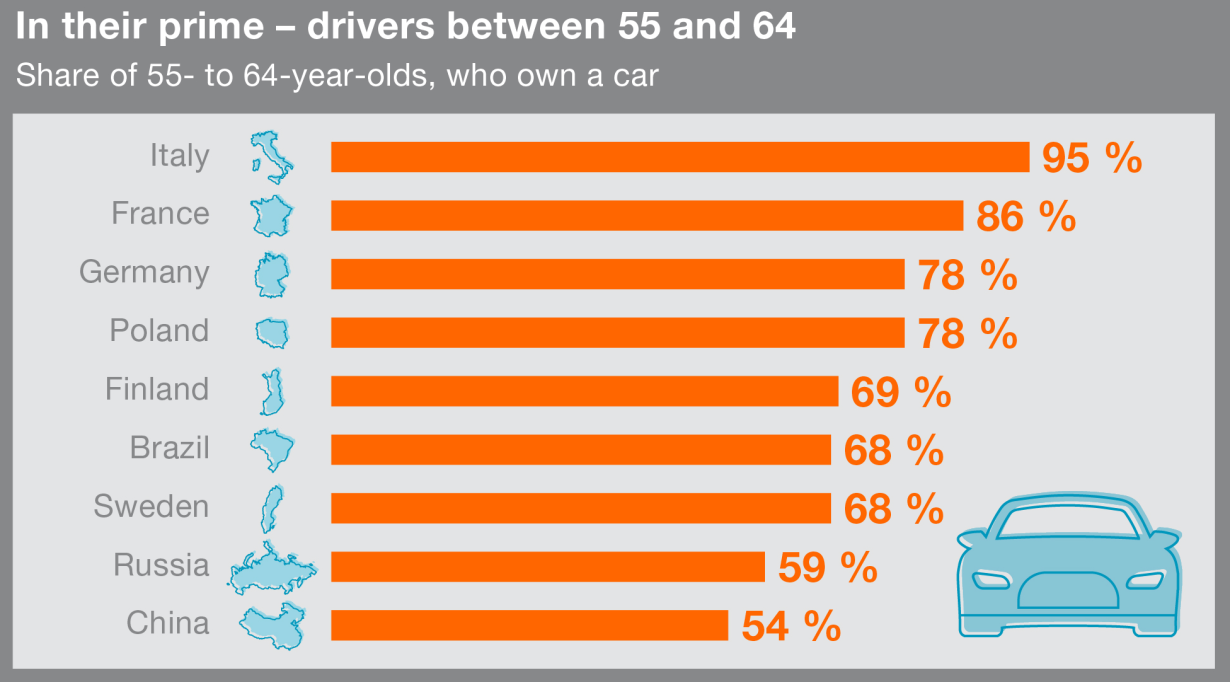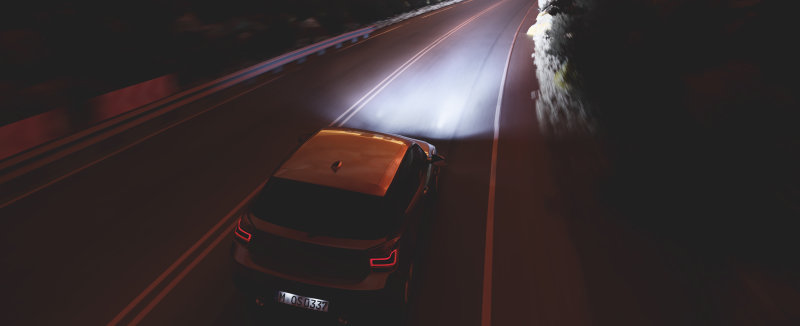Good eyesight
Important for driving, but for many motorists far from common
Many people find driving at night exhausting. Perhaps it’s due to wearing glasses or being night blind or just because a person has generally poorer eyesight at night. And then as we age, eye-muscle elasticity decreases and the problem of twilight vision makes seeing in dim light even more difficult for us. We can no longer open our pupils as widely, so less light falls onto our retina.
Our own headlights seem to weaken and fade in the dark. The speed of other vehicles becomes increasingly difficult to estimate. Most of the time, a new pair of glasses alone just isn’t enough to compensate — especially if poor nighttime eyesight is involved. Time for high-performance headlights!
What drivers fear in the dark
What are you afraid of when driving at night?1
The number of older drivers is increasing
An eye-opener for older drivers and those who wear glasses
Switch to NIGHT BREAKER now
No matter if you choose halogen or xenon light, you can always rely on the huge advantages of NIGHT BREAKER performance lamps. Ask your local auto service center or a specialist dealer about the right lamps for your vehicle. They will be glad to help you. NIGHT BREAKER lamps are also available in pairs in the convenient Duobox.
Many auto service centers, inspection facilities, and auto clubs carry out “light test weeks” at the start of the dark winter months.
As part of this, a check of your lighting system is often done at no cost — just a short stop for additional safety and driving pleasure that will help you through the long nights. You can have the halogen lamps replaced right away during the check or do it yourself at a later point. You can find information about this in the operating instructions of your vehicle.
Changing the xenon lamps on both sides of your car should always be carried out by a qualified specialist.



